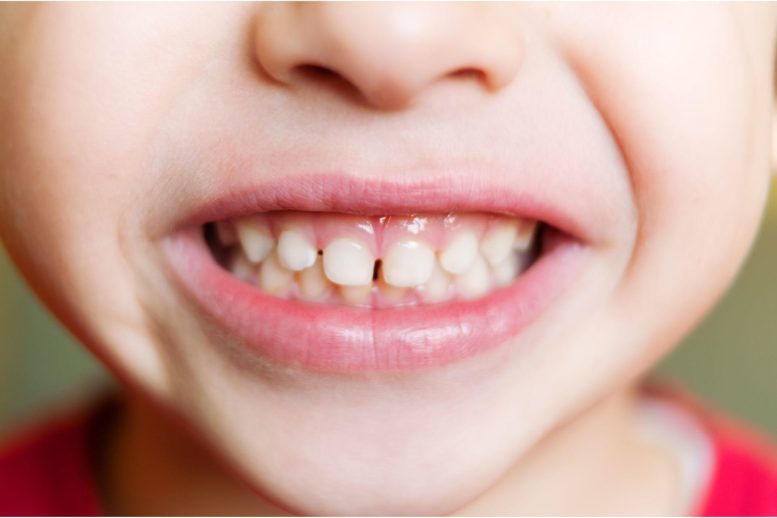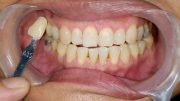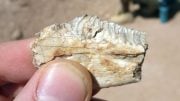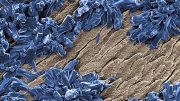
Dental enamel defects are abnormalities that affect the structure and integrity of the enamel, the hard, protective outer layer of the teeth. These defects can be congenital or acquired and can have a significant impact on the health and appearance of the teeth.
The study examined the impact of celecoxib and indomethacin, two types of non-steroidal anti-inflammatory drugs (NSAIDs) classified by the World Health Organization (WHO) as the initial level of pain relief medication, along with paracetamol.
According to a study conducted by the University of São Paulo in Brazil, which was published in the journal Scientific Reports, common anti-inflammatory drugs taken by children may be linked to dental enamel defects (DEDs). These defects, which affect around 20% of children worldwide, can have a significant impact on the health and appearance of the teeth.
The study, conducted by researchers from the Ribeirão Preto Dental School and School of Pharmaceutical Sciences at the University of São Paulo, examined the impact of celecoxib and indomethacin, non-steroidal anti-inflammatory drugs (NSAIDs) classified by the World Health Organization (WHO) as the initial step on the analgesic ladder, in addition to paracetamol.
In recent years, dentists at FORP-USP’s Dental Enamel Clinic, who research and deal with the problem on a daily basis, have observed a sharp rise in the number of children seeking treatment for pain, white or yellow tooth spots, dental sensitivity, and fragility. In some cases, simple chewing can fracture the children’s teeth. All these are classical symptoms of DEDs of the type known as enamel hypomineralization, whose causes are poorly understood.
As a result of this disorder, dental decay in the form of carious lesions appears sooner and more frequently in these patients, whose restorations are less adhesive and tend to fail more. Studies have shown they may have to replace restorations ten times more often over a lifetime than people with healthy teeth.
A coincidence aroused the researchers’ curiosity most of all: the patients’ ages. The first years of life, when DEDs form, are a period in which sickness is frequent, often with high fever. “These diseases are typically treated with NSAIDs, which inhibit the activity of cyclooxygenase [COX, a key inflammatory enzyme] and reduce the production of prostaglandin [which also promotes inflammation],” said Francisco de Paula-Silva, a professor in FORP-USP’s Pediatric Department and last author of the article. “However, COX and prostaglandin are known to be physiological for dental enamel, and we, therefore, wondered whether these drugs interfered in the normal formation of this structure.”
The researchers used rats to study the problem, as these animals have incisors that grow continuously, which facilitates analysis. The rats were treated with celecoxib and indomethacin for 28 days, after which practically no differences were visible to the naked eye in their teeth. However, when the researchers began extracting, they found that the teeth fractured more easily.
Analysis based on imaging and chemical composition suggested that dental mineralization had been affected. The teeth contained below-normal levels of calcium and phosphate, which are important to dental enamel formation, and mineral density was low.
When the researchers looked for the reasons for this, they found alterations in proteins required for the mineralization and cellular differentiation, showing that the drugs had indeed affected the composition of the dental enamel.
Next steps
“Right now, the study at least offers us a clue to the identity of a new player that may be involved in the development of DEDs. Hitherto we’ve been totally in the dark,” said Paula-Silva. “We only achieved these important findings thanks to the efforts of FORP-USP’s Dental Enamel Clinic and collaboration with Lúcia Helena Faccioli, a professor at FCFRP-USP. She made a crucial contribution to our understanding of the role played by lipidic mediators related to inflammatory diseases that affect teeth.”
The group plan to conduct a clinical study with the aim of confirming the results of the research in the animal model. “We’re going to analyze the medical history of the children with DEDs and their use of these drugs, and we’ll set up a clinical study that will correlate the two datasets to see if the same thing happens to humans. If so, we can make recommendations on which drugs shouldn’t be used for which patients. We can also help work out an appropriate treatment protocol in the future,” said Paula-Silva, comparing this situation with that of tetracycline, an antibiotic not recommended for children because it causes tooth discoloration.
Another important point to be addressed is the indiscriminate use of over-the-counter drugs, a problem that appears to have worsened as pediatric care has become more common, although concrete information on this is not yet available.
Reference: “Enamel biomineralization under the effects of indomethacin and celecoxib non-steroidal anti-inflammatory drugs” by Juliana de Lima Gonçalves, Ana Caroline Alves Duarte, Luciano Aparecido Almeida-Junior, Fabrício Kitazono de Carvalho, Alexandra Mussolino de Queiroz, Maya Fernanda Manfrin Arnez, Lúcia Helena Faccioli, and Francisco Wanderley Garcia Paula-Silva, 22 September 2022, Scientific Reports.
DOI: 10.1038/s41598-022-19583-w
The study was funded by FAPESP.








Be the first to comment on "Dental Disaster: Common Children’s Medications Linked to Enamel Defects"